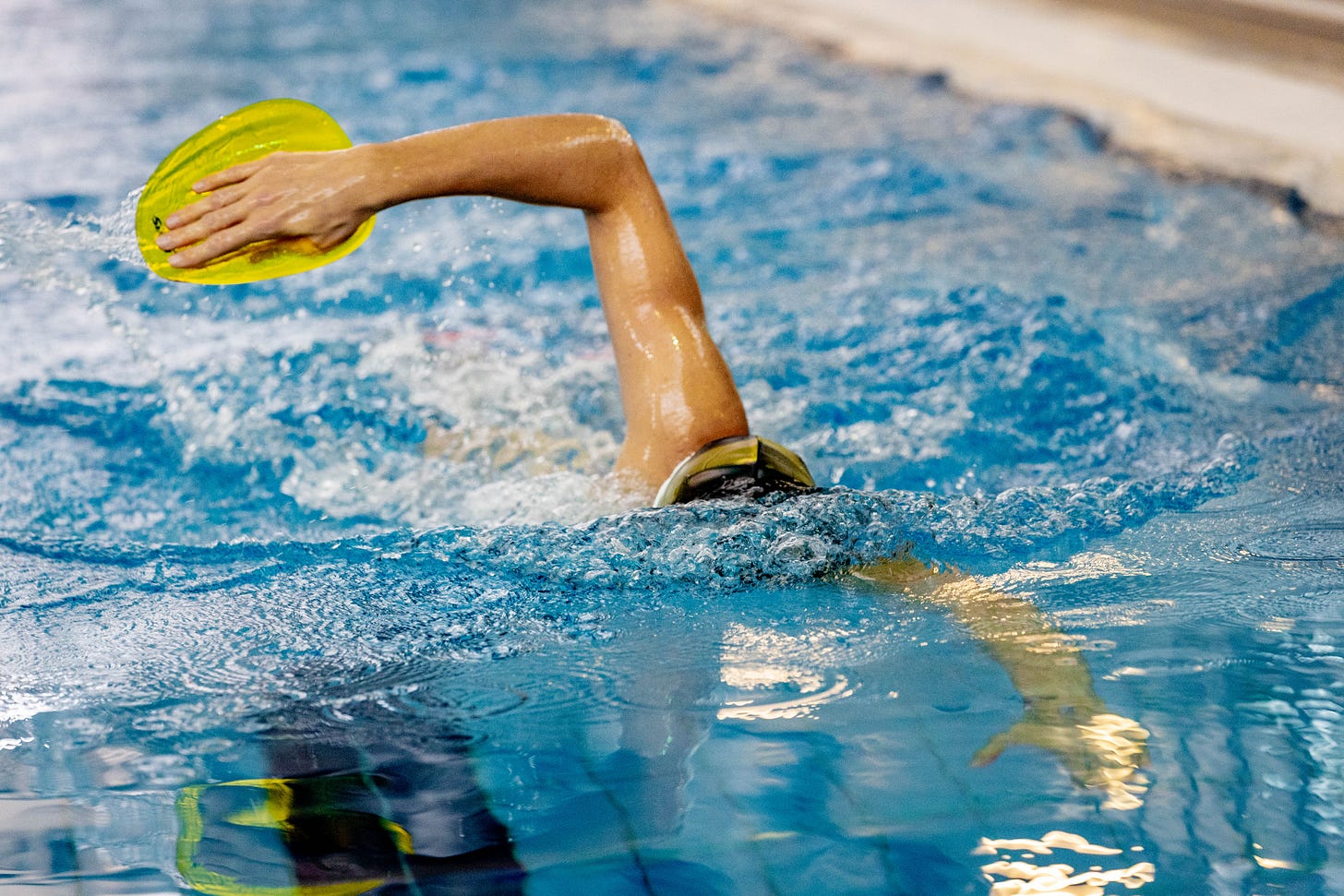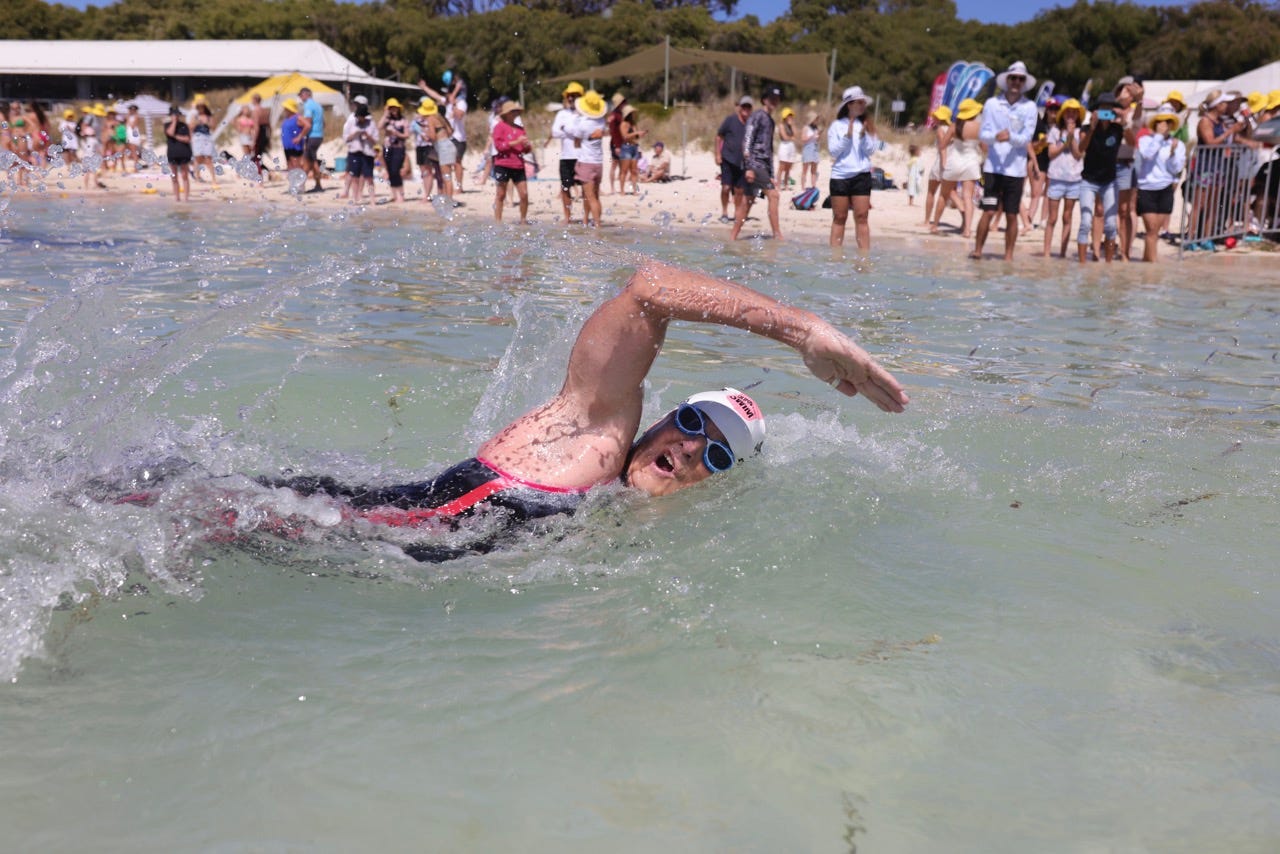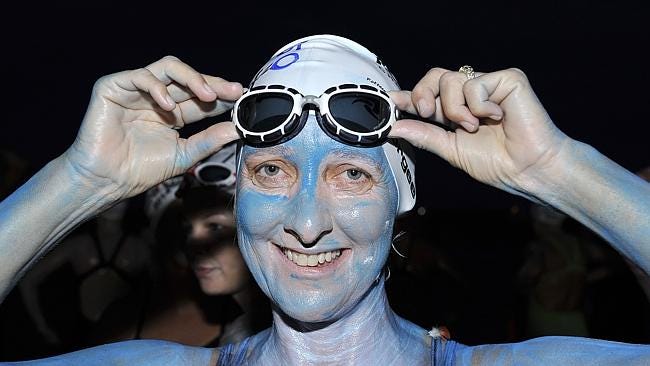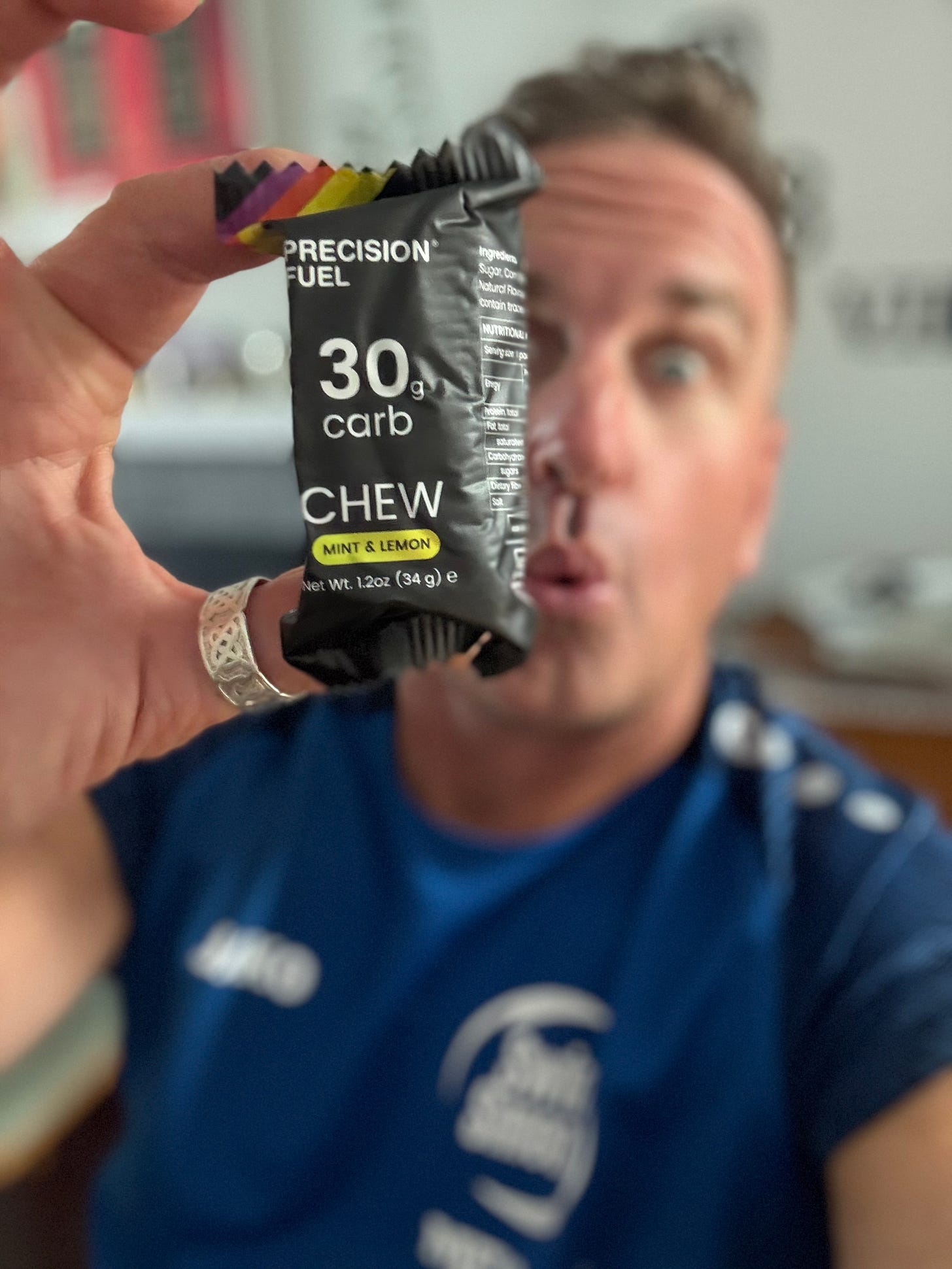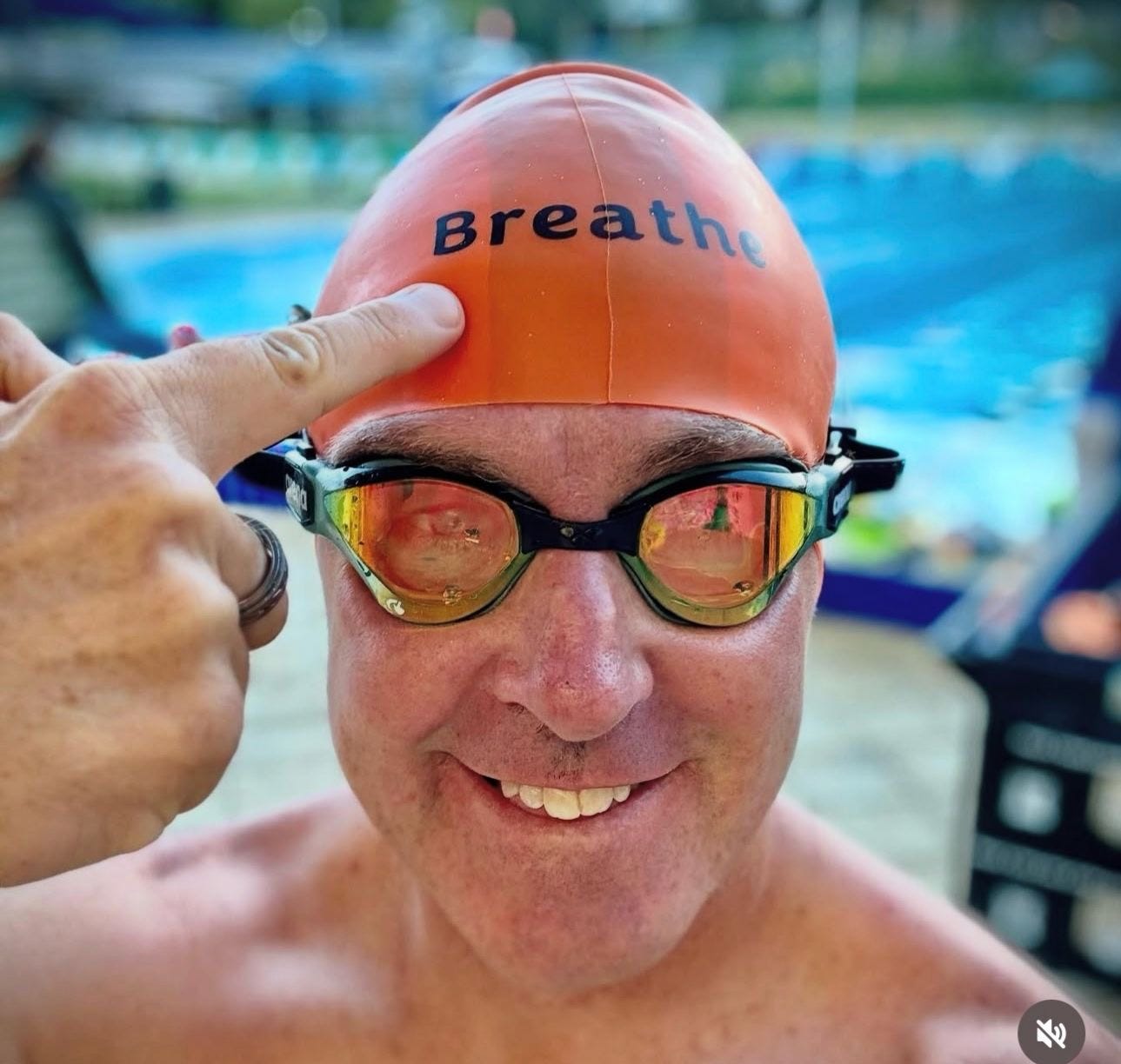🔷 How to Train for a Marathon Swim Without Breaking Down
Top tips for enjoying, not dreading, this process!
Hey Swimmers,
There's something magical—but also deeply humbling—about training for a marathon swim. Long hours in cold water. Endless laps. Mental highs and lows. But when done right, the process not only transforms your swimming—it transforms you.
Whether your sights are set on the English Channel or another long-distance event, success hinges on more than just physical fitness. You need robust technique, a bulletproof aerobic engine, the ability to fuel well, stay injury-free, and somehow balance your life along the way.
Here’s what I learnt from my own English Channel training, and how you can apply it to your own marathon swimming goals.
1. Prioritise Technique That Protects You
Ultra-distance swimmers are often sidelined not by lack of fitness, but by injury—especially to the shoulders. The goal isn’t to be perfect, but to move well enough, consistently enough, to stay in the game.
Avoid:
Thumb-first hand entry (internal shoulder rotation)
Crossing the centre line
A straight-arm press during the catch
Overreaching at the back of the stroke
Single-side breathing that creates asymmetry
💡 Tip: Bilateral breathing not only balances your stroke—it keeps communication open with your pilot or paddler on event day. Just like in this video from the archives here:
Even at high volume (I built from 16km/week up to 70km), I stayed injury-free by maintaining form and having regular check-ins with video analysis to ensure I wasn't ingraining poor habits.
These days, I utilise our Stroke Insights℗ on the Swim Smooth GURU to give me technique feedback every session even when training solo or in the open water. The heat maps drawn from the data from your Apple Watch or Garmin device allow us to monitor your technique for:
Recovery & Rotation, i.e. are you rolling down the long axis of your spine or being a bit flat in the water with the hand leading the elbow which can lead to shoulder issues and even the lower back.
Hand Entry Angle (shown below), i.e. are you potentially causing a very fixable shoulder issue by entering in the old-fashioned way.
Pull through, i.e. are you pulling too deep and overly loading the shoulder during the propulsive phase of your stroke.
Stroke timing, i.e. are you stalling and overgliding between strokes which can lead to inefficient swimming in rough conditions and also unnecessarily overload the shoulders.
Hand entry position, i.e. are you crossing over in front of the head and placing undue stress on the internal aspect of your shoulder causing possible impingement.
Arm Recovery, i.e. are you maybe either forcing your elbow too high over the water or throwing it a little too ballistically, both of which can stress the shoulder.
Why not treat yourself to a little stroke technique review this weekend by downloading the GURU for a FREE 7-day trial of these cool features:
2. Build a Diesel Engine, Not a Turbo
Coming from a triathlon background, my physiology was tuned for short, intense bursts. But marathon swimming demands something else entirely: an efficient, controlled pace you can hold for 10+ hours.
The transformation wasn’t fast—but it was simple:
Train at your endurance threshold pace—the pace you can hold for hours, not just minutes. We’d normally relate this to ~CSS +6-8s per 100m which feels very cruisy over short distances - almost like it wouldn’t be effective, but it is.
Do most of your training just above this level (80% or more). Our Red Mist Endurance Sessions are a great benchmark as are our Long Aerobic Interval Sessions.
Use tools like a Finis Tempo Trainer (pool) and Garmin (open water) to help maintain consistency.
💡 Tip: Begin with 4–6 x 1000m at your base pace with 60s rest. Get used to holding back when it feels “too easy”—it’s how you build endurance for the long haul.
3. Acclimatise Smartly to Cold Water
Being fit won’t help if you can’t stay in the water. Acclimatisation is both physical and psychological. Here's what worked for me:
Grease up: Use lanolin/Vaseline mix on the abdomen and kidneys to preserve warmth.
Ease in: Enter slowly, control your breathing, and splash your face/chest first to blunt cold shock.
Mental tricks: Tell yourself you only need to take 30 strokes—by the time you do, the panic usually passes.
4. Nail Your Fuel Strategy (and Practise It)
Everyone’s needs differ, but here’s what worked for me:
Alternate feed stops every 30 minutes.
Rotate fluids: electrolyte/carbohydrate, water, cola or Ribena.
Add one 25g gel at every other stop.
💡 Rough guide:
600–800ml fluid/hour
1g carbohydrate per kg of bodyweight/hour
I adjusted down slightly—overfuelling made me bloated and cost me an Ironman finish once. Use the formula as a starting point, then tweak during training.
The chart below is from my recent 25km Port to Pub swim. I had to estimate my average swimming pace to get the feeds correct. I said 1:30/100m (which accounts for the feed stops themselves). Our true GPS trace shows I averaged 1:30.6/100m - not a bad estimate given we didn’t know the exact conditions etc. It really helps knowing exactly what your pace is, not your mates or what you ‘hope’ it would be.
5. Keep It All in Balance
You can’t train 25km every Sunday and expect home life to stay the same. Burnout isn’t just physical—it can affect relationships, work, and your mental health. It’s crucial to:
Take at least one full day off each week
Schedule easier weeks every 3–4 weeks
Avoid chasing perfection in your training plan—consistency beats complexity
💡 A stable, simple weekly structure that fits your life is better than a dazzling program you can't stick to.
Final Word: The Swim is the Reward
Training for a marathon swim isn’t just about finishing a race. It’s about learning patience, mastering control, and becoming resilient through repetition. Sometimes it’s just about remembering to breathe.
I learnt how to zone out. To focus on rhythm, not drama. To let the sessions accumulate, rather than trying to win every single one. That mindset shift is just as powerful as any pace chart or fuelling plan.
Next week, we’ll explore how improving your breathing efficiency can boost performance for every swimmer—whether you're doing 25m lengths or 25km crossings.
Keep reading with a 7-day free trial
Subscribe to Weekly Blog by Swim Smooth to keep reading this post and get 7 days of free access to the full post archives.



